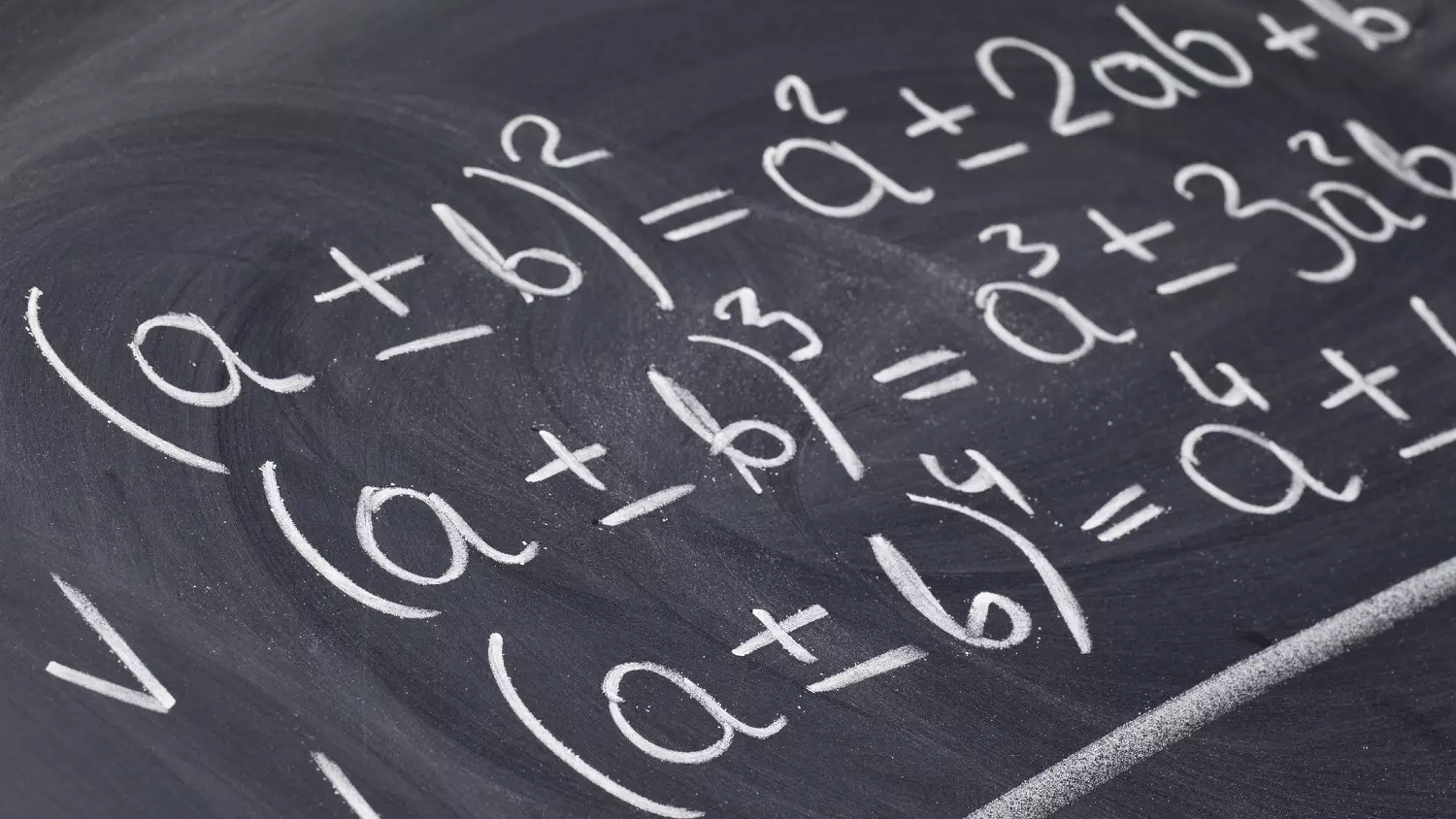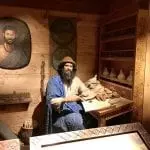[Originally published as part of Math Lesson: The Why and Where of Mathematics]
Where Can We Find Math?
Try to think of something that cannot be related to math. Maybe your mom, for example. She has a weight, a dress size, and an age.
Let’s try the word “love.” Using counting (or natural) numbers, the word “love” has four letters. The letter “l” is the 12th ordinal number letter of the alphabet, and the letter “e” is the 5th.
Can you think of other math attributes about your mother and the word “love”?
As you grow, your height is measured. You have a certain amount of friends. Just think of the many other measurements that are part of your life.
Here is a brain teaser: How do you know how old you are? (Do not just give a birthday.)
You cannot go out to eat (money, restaurant schedule, tipping percentage, and more) or even cook at home (recipe proportions, temperature settings, and more) without using math.
Money works mainly in decimals. Decimals show up when you pump fuel and look at how many miles a car has been driven.
Music is loaded with math, from fractions such as half notes and time signatures to much more complex configurations of tonal frequencies.
There is geometry in every building you have ever seen. Just think of all of the angles.
Of course you know a soccer field and goals have specific measurements, but did you know the soccer ball is made up of pentagonal and hexagonal shapes? You can’t play any sport without using math. Even the baseball pitch called a “curve ball” has an equation describing its motion.
Simple things, like tick-tack-toe, are mathematical. You use vertical, horizontal, or diagonal moves, just to name a few mathematical characteristics of that game.
Carpenters, mechanics, and plumbers use math. Fill in the blanks: ___ degree rafter angle; ___ centimeter socket wrench; ___ gallon hot water tank.
Secret military codes are based on mathematics.
A fun code for you to use is something like, Let A = 0, B = 1, C = 2…, but add x to each letter to get the code. The variable x can stand for any number. Let’s use x = 3. The word “CAT” would be 5322 (C is 2 + 3 = 5, A is 0 + 3 = 3, and T is 19 + 3 = 22).
It takes math for airplanes to fly and submarines to submerge.
Farmers plant, pizzas are produced, and swimming pools are filled with the use of mathematics.
In electronics, there is much more math to a flat-screen television than just the screen size. If there were no math, your cell phone would not exist.
Everything you view on a computer is based on math. Very basically, bits (0, 1 — on, off) are combined to form symbols. You can find out how bits are put into bundles in computers. It takes a lot of math to program something like a computer game too.
You can use math to save your family money. If a product costs $10 for one gallon, how much is the cost per quart? Use algebra to solve the problem. The answer can be used to compare the cost to other products, especially if they are in different size containers.
Even a circle is mathematical. From a circle, you can find a radius, diameter, and circumference and come up with a really fun number called Pi. You do not eat that kind of Pi. A circle also has an arc, and it is not the one that Noah built.
There is artistic beauty in mathematics:
Leonardo Da Vinci painted the lovely Mona Lisa using the mathematical concept of the Golden Ratio. For some artistic fun, look up “Melancholy” by Albrecht Durer. You can have more fun using the math of a plane (not the kind you fly on) with the artwork of M.C. Escher.
Graphs are used to visually explain how tax money is spent.
Estimation is often used without even thinking about doing it. For example, you have to be home at a certain time, and you estimate when you have to leave in order to make it in time. Name some other ways you estimate in your life.
Living things are amazing mathematical beings. You have a heart rate and a blood pressure, just to name two. Insects have six legs. Whales are heavy. Using real science, all creatures have a multitude of complex mathematical features and measurements.
The previous examples are just a tiny part of the mathematics of your life. Some of the math is fun. Some of it is crucial (medicine quantity, for example) for survival.
Does God Use Math?
There are many instances in the Bible where math is used. A few are:
And this is the fashion which thou shalt make it of it: The length of the (Noah’s) ark shall be three hundred cubits, the breadth of it fifty cubits, and the height of it thirty cubits. Genesis 6:15–16
“For which of you, intending to build a tower, sitteth not down first, and counteth the cost, whether he have sufficient to finish it?” Luke 14:28
And [the angel] that talked with me had a golden reed to measure the city (New Jerusalem), and the gates thereof, and the wall thereof. And the city lieth foursquare. Revelation 21:15–21
The Bible does not say, “God created math,” however, Colossians 1:16 makes it clear that he did:
For by him were all things created, that are in heaven, and that are in earth, visible and invisible, whether they be thrones, or dominions, or principalities, or powers: all things were created by him, and for him.
It is easy to think about his creation and see that math is very much involved. The first verse in the Bible has a mathematical concept.
“In the beginning God created the heaven and the earth.” Genesis 1:1
The “beginning” means the point when something starts. So, the counting of time began at zero and has continued to the date of the day you read this. For those who like a challenge: study the Bible and estimate how many days have passed since God finished his literal week of creation.
In Genesis 1:5, God used an ordinal number when he finished his “first” day of creating.
God instructed a man named Job (and, by extension, everyone) to look at God’s creation when he said,
But ask now the beasts, and they shall teach thee; and the fowls of the air, and they shall tell thee: Or speak to the earth, and it shall teach thee: and the fishes of the sea shall declare unto thee. Who knoweth not in all these that the hand of the LORD hath wrought this? Job 12:7–9
God used another man, Leonard of Pisa (known as Fibonacci), to reveal a special mathematical feature God put into his creation. This feature is a number sequence known as the Fibonacci Sequence. This sequence (1, 1, 2, 3, 5, 8, 13, 21… to infinity by adding the last two numbers to get the next number) can be found in living cells, flower petals, honeycombs, pinecones, galaxies, and much more — including you.
Take two successive (next to each other) Fibonacci numbers (3 and 5, for example) and make a ratio (3/5), then divide the denominator by the numerator (5 divided by 3), and the answer is close to the Golden Ratio ( 1.618034…). It gets closer as the numbers get higher. As mentioned above, artists have used the Golden Ratio, but so have sculptors in their creations and architects in their designs. The Golden Ratio is also called the divine proportion and God’s fingerprint. Take a look at a video about God’s Fingerprint.
Anything made is a reflection of its maker. God must have had fun when he created cicada insects. If you want to really “strain your brain”, read the article “Do Cicadas Count?”
Humans, in rebellion against God, made up a story called “evolution” to explain how life came to be what we see. The mathematics of probability eliminates any reasonable chance that evolution caused any of earth’s creatures. A famous scientist said,
“Imagine 10^50 (That is a 1 followed by 50 zeroes!) blind persons, each with a scrambled Rubik(s) cube, and try to conceive of the chance of them all simultaneously arriving at the solved form. You then have the chance of arriving by random shuffling of just one of the many biopolymers (special molecules in living organisms) on which life depends. The notion that not only biopolymers but the operating programme of a living cell could be arrived at by chance in a primordial soup here on the Earth is evidently nonsense of a high order.” (Fred Hoyle, “The Big Bang in Astronomy”, New Scientist, Vol. 92, No. 1280 (1981): p.527)
For more practical activities using mathematics, see the original version.







